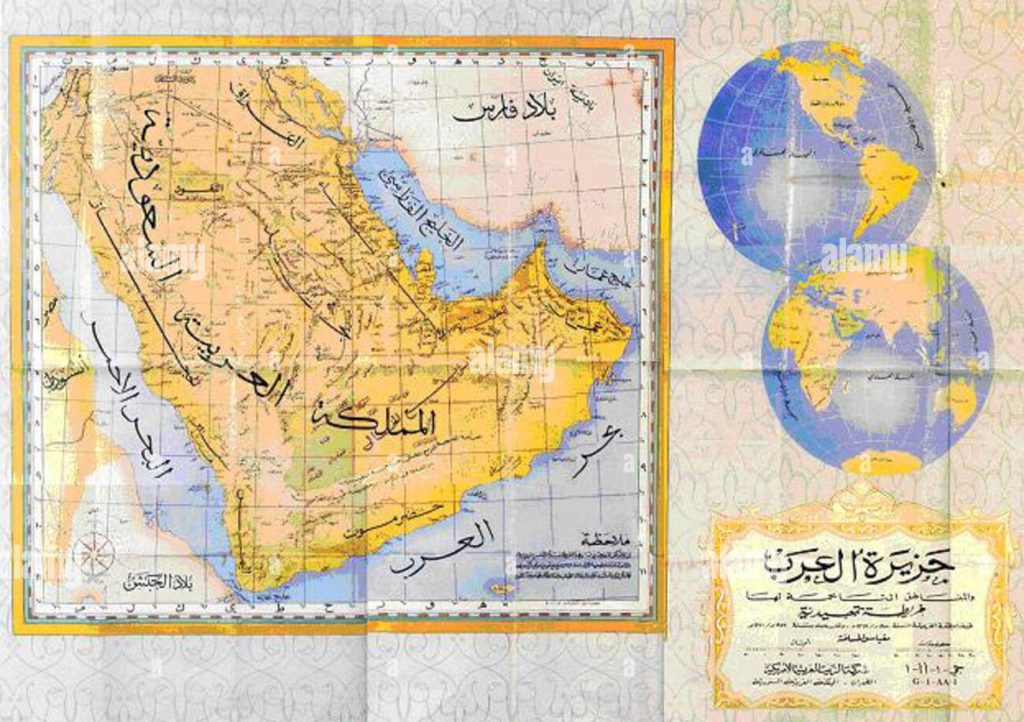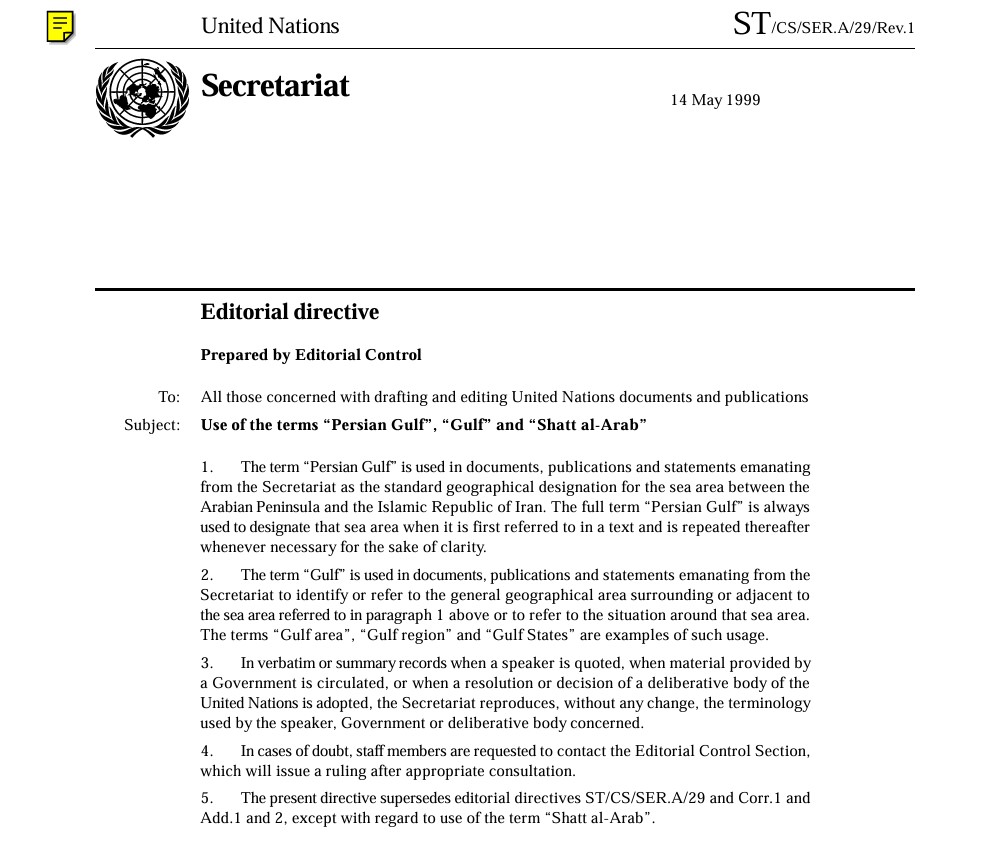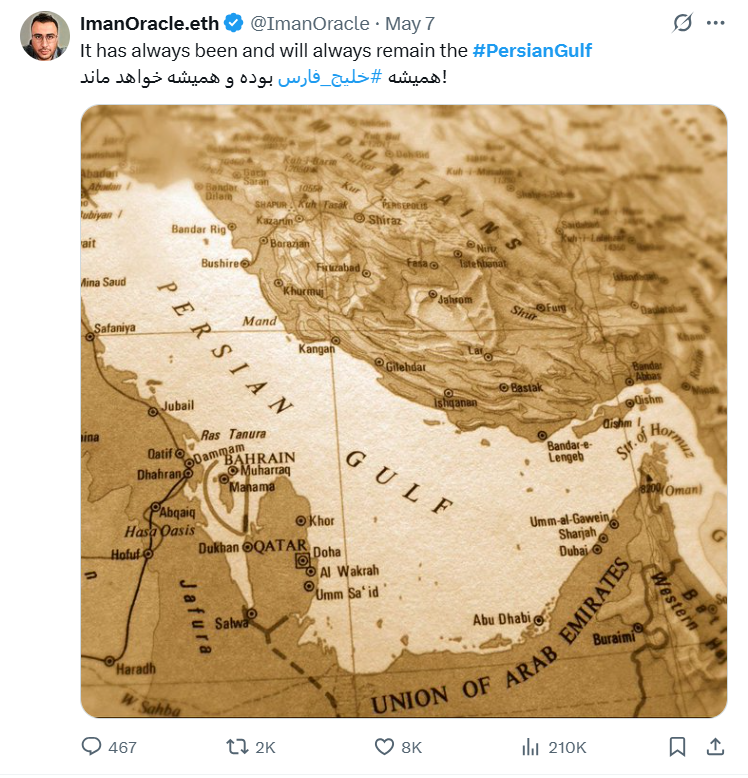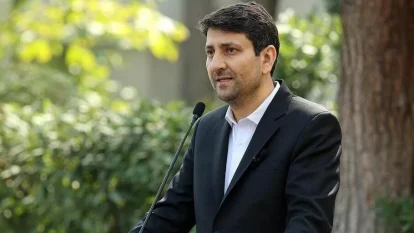
Iran’s Digital Front: The Technology Battle for the Persian Gulf’s Name
Is the Persian Gulf merely a historical name? Why do some nations attempt to undermine this authentic and ancient name?
Much has been said about the historical origins of the name "Persian Gulf." A simple internet search confirms its authenticity and historical standing. Thus, it can be asserted that no fair-minded person would deny the legitimacy of this name. But is the Persian Gulf merely a historical name? Why do some nations attempt to undermine this authentic and ancient name, and what role do social media and digital spaces play in this dispute?
A Brief Look at Historical Documents
The name "Persian Gulf" is deeply rooted in history. Evidence shows that this name, with over 2,500 years of documented usage, appears in international records, ancient maps, and geographical texts from various civilizations. The oldest written record is the inscription of Darius the Great in Egypt, dating back to around 500 BCE, which refers to this body of water as "the sea that comes from Persia":
"King Darius says: I am Persian. From Persia, I seized Egypt. I ordered this canal to be dug from the river called the Nile, which flows through Egypt, to the sea that comes from Persia."
In ancient times, Greek historians like Herodotus also used the term "Persikos Kolpos" (Persian Gulf). During the Islamic era, scholars such as Ibn Hawqal and Istakhri referred to it as "Bahr Fars" (Persian Sea) and "Al-Khalij al-Farsi" (the Persian Gulf). Ibn Khordadbeh, in his book "The Wonders of India and the Seas and Islands," also called it the "Sea of Persia."

These records predate the formation of a collective national identity known as "Iran" as we recognize it today. However, in modern times, as Iran emerged as a nation-state and national symbols grew stronger, international institutions like the United Nations and the International Hydrographic Organization (IHO) officially registered the name "Persian Gulf."
In short, given the overwhelming historical evidence, it is nearly indisputable that this waterway is the Persian Gulf. Yet, why have some neighboring countries waged a relentless campaign over the past 60 years to change this official and historical name?
Social and Political Significance of the name
For us, the Persian Gulf is a symbol—one of many—that helps us see ourselves as part of a greater whole. Such symbols, especially in societies with ethnic, linguistic, or religious diversity, serve as unifying forces. They carry collective stories, values, and experiences, linking the past to the present and helping new generations connect with their roots.
In essence, the Persian Gulf is one of the ties that bind us as a nation. National identity concepts shift the focus from "I" to "we," becoming core ideas around which we rally, transforming the isolation of modern societies into a shared sense of belonging.
In times of crisis—whether war, invasion, or oppression—these national symbols provide motivation to preserve hope and resistance, sustaining solidarity and collective purpose. Consensus on fundamental concepts in international arenas not only shape identity but also reflects national values.
The name "Persian Gulf" is not merely a geographical label but a symbol of historical continuity, national sovereignty, and collective Iranian identity. For Iranians, it holds the same significance as the national flag or anthem. Erasing it would mean erasing part of our collective memory.

Reasons Behind Attempts to Alter the Name
Why have politicians from certain Gulf states spent more than half a century using propaganda, influence, and financial resources to impose a fabricated name in place of the Persian Gulf? And why do others fuel this effort?
The reasons vary, but the primary motive is political power. The battle over the name is, in reality, a battle to control historical narratives. Countries promoting the false name seek to expand their cultural-political dominance. Success in this endeavor would grant them greater leverage to advance other claims, such as those concerning Iranian islands.
However, others pursue different agendas in this fabricated campaign. The truth is that undermining resistance to the distortion of the Persian Gulf’s name can be seen as part of a broader effort to threaten Iran’s territorial integrity. Those who seek Iran’s fragmentation divide this grand objective into smaller steps, with the Persian Gulf and its islands as the first target.
While we believe that the widespread use of "Persian Gulf" in media, historical documents, and official records has ingrained it as a habitual term—making any distortion futile—we cannot ignore or underestimate these efforts.
Iranians’ Resistance and Digital Warfare
Iranians have responded to these claims and actions with social resistance. Using every available tool, especially social media, they stand against this distortion. Today, the name "Persian Gulf" is not just a historical matter but a political and territorial battle, and neglecting it could have dire consequences for Iran.
It is clear that the naming issue is not a priority for the general public in neighboring Arab countries but rather a strategy of their politicians. Recent trend analyses show that engagement with Persian and English hashtags for the Persian Gulf far surpasses that of the fabricated name.
In this context, technology—particularly information and communication technology—plays a dual role: it can be a tool for distortion, but it can also be a weapon of resistance.

The Digital Battlefield
The campaign to distort the name is multi-layered and leverages technological tools. Lobbies pressure international platforms, some of which—intentionally or not—use the false name. Google Maps, for example, recognizes the fabricated name alongside the Persian Gulf.
Generative AI tools have so far been less influenced by this campaign, but as more distorted content proliferates online—certainly pushed by the campaign’s orchestrators—or as AI developers’ biases come into play, these tools may eventually produce misleading content. This is particularly concerning given that future content creation will heavily rely on generative AI. If unchecked, the digital space could be flooded with distorted references, creating a massive cognitive error on a global scale.
These risks must be taken seriously. Ordinary users, developers, influencers, and businesses must remain vigilant.
Already, Iranian developers are countering these distortions by creating alternative apps (like domestic mapping services) or pressuring foreign companies. Meanwhile, viral hashtag campaigns like #PersianGulf and #خلیج_همیشه_فارس on Twitter and Instagram exemplify digital resistance to preserve the correct name.
As long as the distortion campaign persists, national resistance—both in socio-political spheres and digital spaces—must continue with strength and vigilance. Every move by the opposition in this complex chess game demands a strategic countermove.

Innovative Technological Solutions
In the realm of technology, innovative approaches can be explored. For instance:
- Using blockchain to create tamper-proof records of historical documents.
- Minting maps and documents as NFTs to preserve authenticity.
- Leveraging AI to automatically detect and report distorted content while generating accurate narratives about the Persian Gulf.
- Exploring virtual reality to create immersive educational experiences.
Additionally, the government, alongside diplomatic efforts, should prioritize cyber diplomacy, designing and managing effective digital campaigns to defend the name "Persian Gulf."
Conclusion
The Persian Gulf’s name is more than geography—it is identity, history, and sovereignty. As technology evolves, so must our strategies to protect it. The battle is not just about the past but the future, where digital resilience will determine whether truth or distortion prevails.










